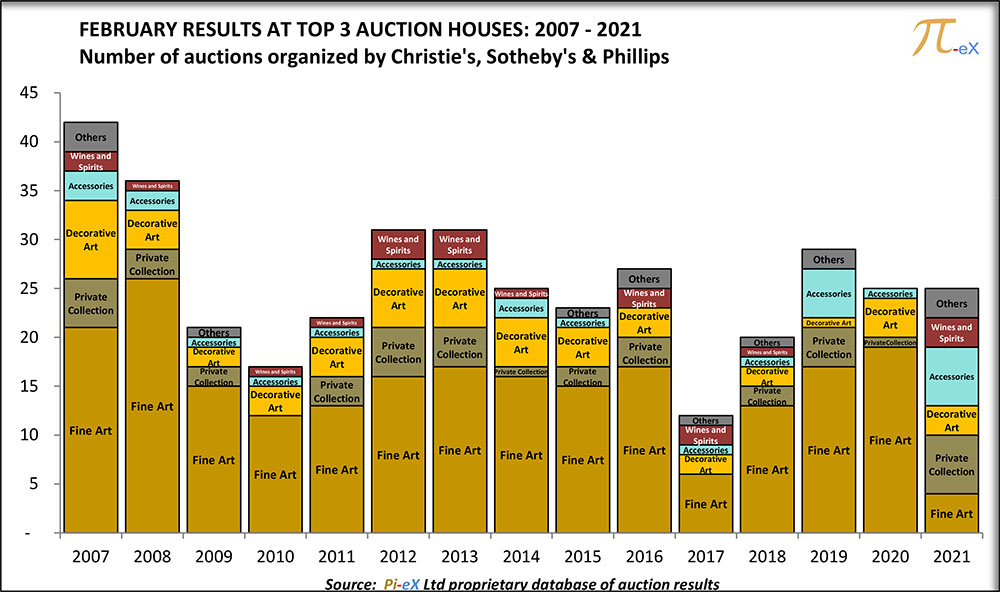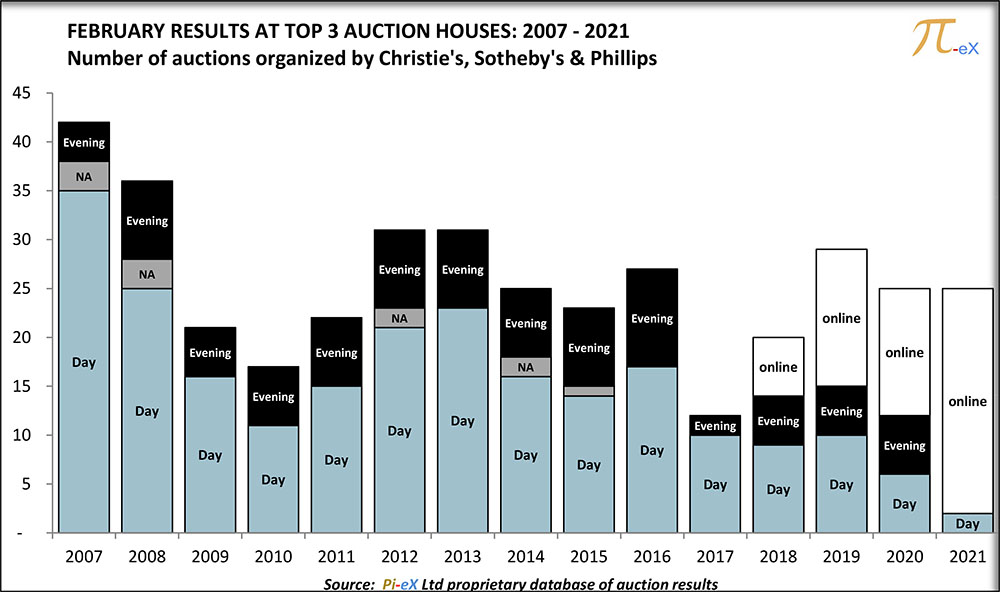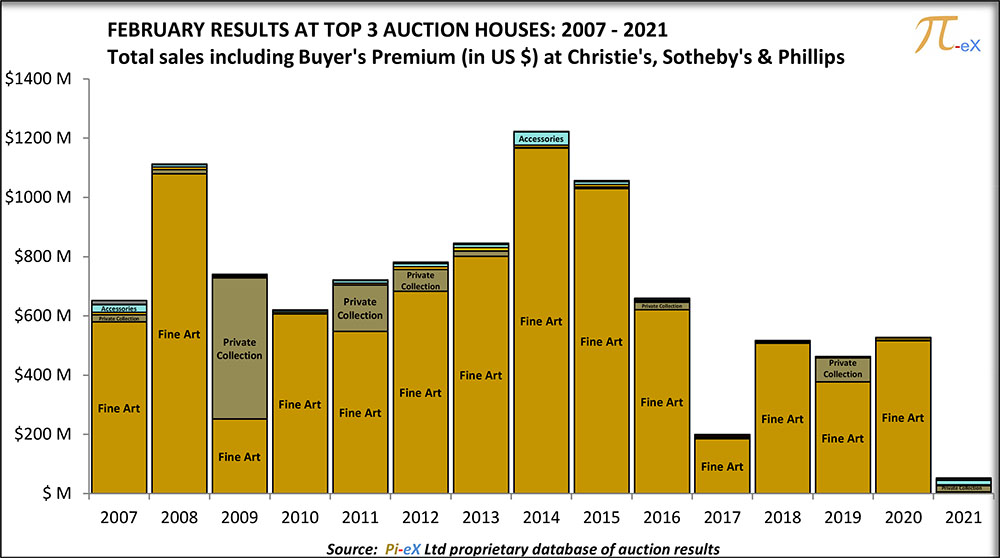The importance of the public auctions calendar
Posted by Pi-eX Research on 11th Mar 2021
The traditional calendar of public auctions at Christie's, Sotheby's, and Phillips was seriously challenged by the pandemic in 2020. Historically, the fixed calendar has helped coordinate the timing of auctions at the top three auction houses. With the rise of pure online sales however, some argue that the calendar could be a thing of the past, as the virtual world is free from time and space limitations. Is it the case?
The results at the top three auction houses in February 2021 could provide some insights into what happens in the absence of the traditional calendar sales. Last month, the decision to shift the so called "February London Impressionist & Contemporary art sales" from February to March made it possible for the auction houses to build and offer a completely different selection of auctions.
While the total number of auctions arranged in February 2021 was about the same as in February 2020, the auctions arranged by the auction houses differed significantly from the past:
- the offering was much more diverse than it has historically been during the month of February

- Most auctions were purely online except for 2 live auctions arranged in Paris:

While creative and different, the alternative offering of auctions did not succeed in bringing significant revenue as the total combined revenue for February 2021 plummeted 90%, from $520 million in February 2020 to $52 million in February 2021.

The shifted February revenue from the London Marquee sales will, of course, appear in the March results, so results will not look as dramatic when analysed on a quarterly basis.
It remains however that without the key calendar sales, none of the multiple online auctions arranged by the top three auction houses were able, so far, to replace the magic of the calendar.


